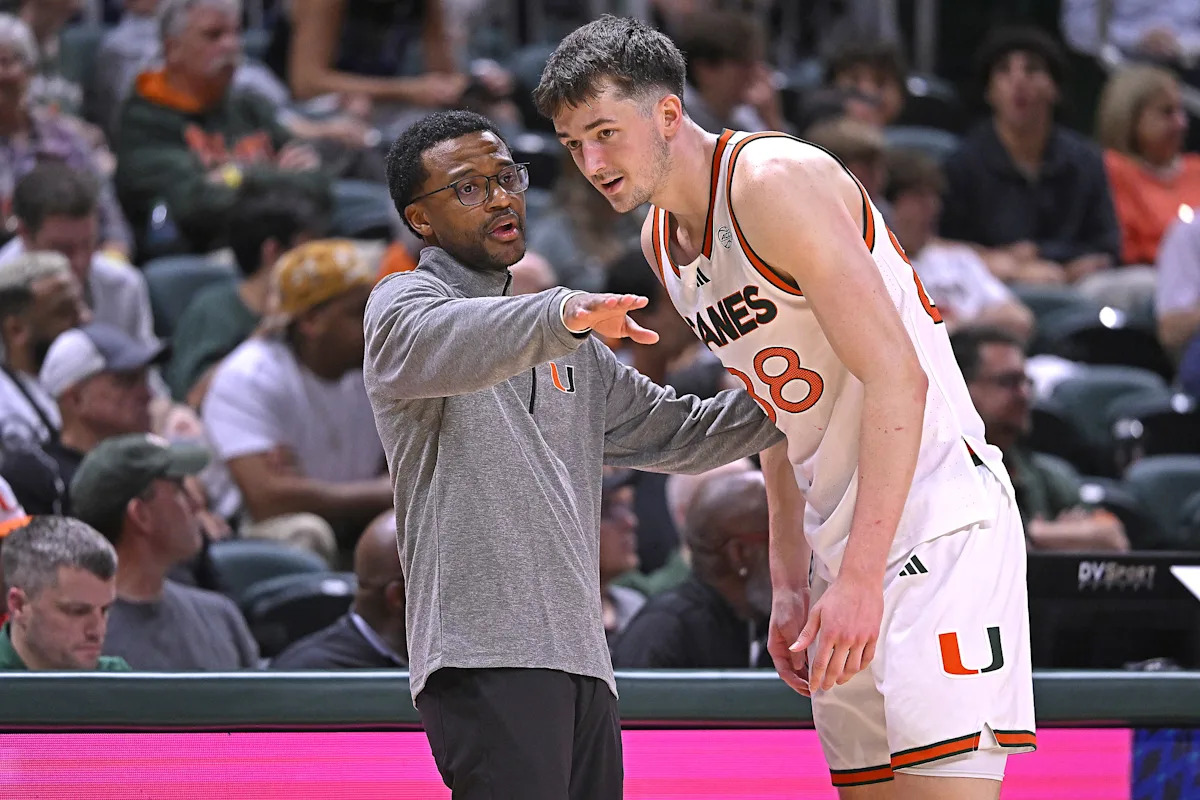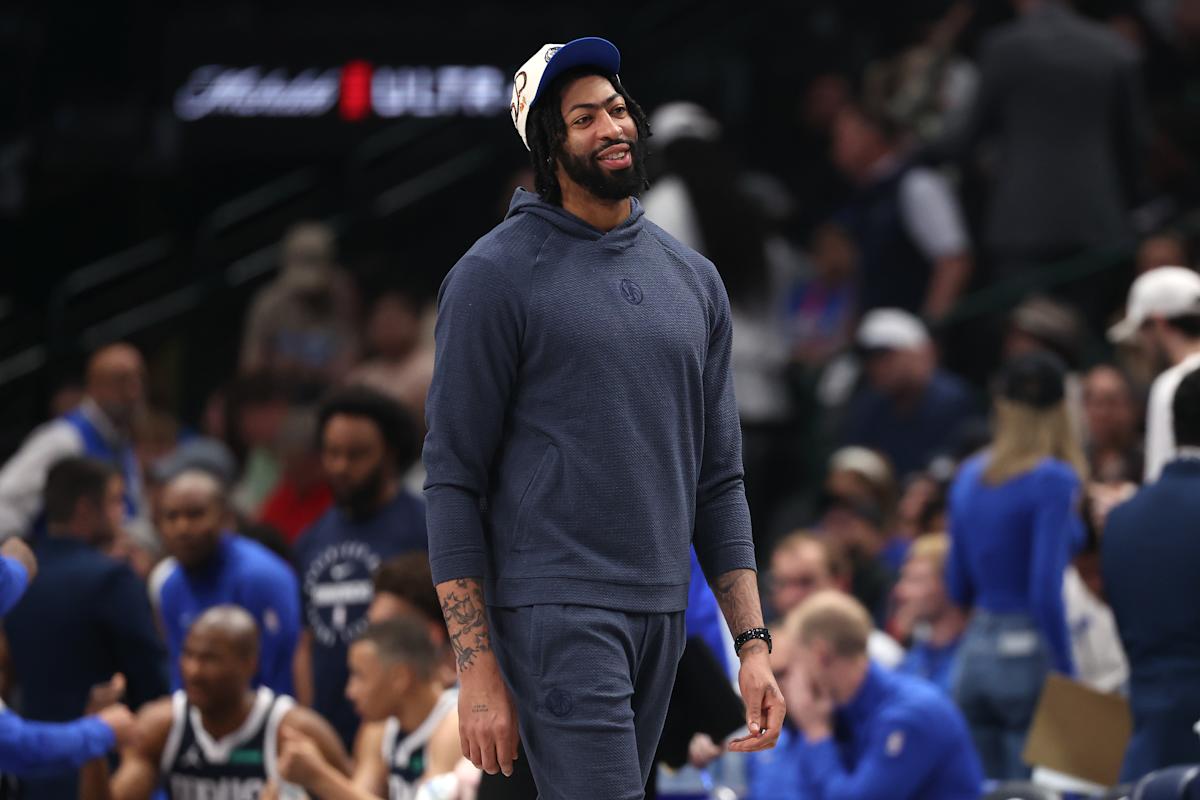Coming from someone who’s sat in hundreds of them, news conferences aren’t typically all that interesting.
Yet, Tuesday night? Hoo, baby. Did Madison Square Garden ever deliver, with a pair of absolute bangers — and, no, we’re not talking about the actual Champions Classic games: Michigan State destroying Kentucky 83-66 in the opener, before Duke outlasted Darryn Peterson-less Kansas, 78-66. Neither contest was particularly high-level, especially compared with past iterations of this event.
However, Mark Pope and Tom Izzo’s postgame remarks? That’s the good stuff.
And while much has already been made over the past 36 hours about Pope’s doom-and-gloom demeanor in trying to explain away Kentucky’s early-season struggles — yours truly cannot remember the last time a coach was that distraught five games into a season — let’s instead start with what the winning coach had to say. It was more revealing than you might realize.
1. Tom Izzo’s hidden winning formula
Izzo was asked Tuesday about roster continuity — specifically, if that’s being undervalued in the college game today. Fuse, meet match.
“How about 100 freaking percent?” Izzo began. “I mean, homegrown. People that are playing for the name on the front of their jersey because they know the name on the front of their jersey. People that care about the place they’re at and the players they’re with. … The transfer portal recruitment is almost bigger than winning games. Not at Michigan State.”
Izzo has taken a few transfers here and there — Trey Fort, for example, who had 13 points and three 3s against the ‘Cats, is a new arrival in East Lansing and on his fourth school in four years. However, the 70-year-old has largely swam upstream against the massive roster overhauls sweeping the sport. That formula was seemingly validated with last season’s Big Ten title team, which featured one NBA-bound freshman (Jase Richardson), two frontcourt transfers and six rotation returners from the year prior. This season’s group is no different; it features two freshmen, one transfer and five returners, four of whom start and play at least 24.5 minutes per game.
And though it’s just one game, Michigan State’s performance against UK — a team with only three returners among its top 10 rotation players, none of whom play more than 25 minutes — gives at least some credence to Izzo’s method.
How replicable is that formula? Much more so than you’d think, and the best teams in the country seem to have caught on.
There’s still variety in how to build a team — Duke’s continued reliance on elite freshmen, for instance, or Louisville’s supercharged transfer portal rebuild — but even those programs fit a larger pattern. Look no further than the current roster makeup of KenPom’s top 10 teams.
Six of the 10 — Duke, Houston, Purdue, UConn, Iowa State and Florida — start at least three players who returned from last season. Louisville is an outlier with only one returner currently starting. Each team has at least four returners averaging 10-plus minutes per game. Seven have one or no top-100 transfers averaging over 10 minutes.
Duke, Houston and Arizona are the only top 10 teams with at least three top-50 freshmen averaging 10-plus minutes per game.
It shouldn’t be surprising that teams with more retention are thriving out of the gate. It’s easier to teach your offense and defense — and, as Michigan State proved this week, your culture — earlier in the season if players are already familiar with those things, who then teach the newcomers. Will that trend hold for the rest of this season, or will teams with more turnover catch up (or creep past less-talented returners)?
The two teams that played for the national title in April aligned with Izzo’s philosophy; Florida started three returners — including Final Four MOP Walter Clayton Jr. — and two transfers, while Houston started four returners and one transfer.
If this season ends up the same way, expect roster-building tweaks across the board come next offseason — except from Izzo.
2. Michigan State’s encouraging past precedent
Immediate reaction from New York focused more on what went wrong for Kentucky than what Michigan State did well — but Sparty’s win warrants its own deeper dive.
MSU doesn’t have one singular star who can get a bucket whenever Izzo needs, but that’s hardly a weakness. We know that by looking at past precedent.
After Tuesday, when Michigan State had 25 assists on 32 made shots, Izzo’s team vaulted to first nationally in assist rate, per KenPom, averaging an assist on a staggering 78.2 percent of its field goals. Only 19 teams have posted an assist rate over 70 percent in the past 25 seasons, per KenPom, with nobody having done so since 2016 — coincidentally, the last time Michigan State hit that threshold.
Only, it’s not a coincidence at all. Izzo’s teams have finished top-10 nationally in assist rate nine times since 2000, including a ridiculous run from 2016-2020 in which MSU never finished worse than third. The natural follow-up question that every Spartans fan should be asking, then: What about in the Final Four seasons?
In MSU’s past four Final Four appearances, it has finished first, seventh, 17th and 10th, assisting on at least 62.2 percent of its made shots each of those seasons. Not a bad trend line for the current Spartans to follow, huh?
Of course, that conversation starts with Jeremy Fears Jr., who appears to have taken “the leap” and is leading the country with 10.3 assists per game. His 13 dimes against the ‘Cats were a career high. Rarely do you see someone score only eight points, yet completely control a game with vision and passing like this:
Fears’ poise during the only real hinge point in the second half is what should inspire optimism for Michigan State’s Big Ten chances. Before UK’s spirit gave out, Kentucky did make a mini-run, cutting the deficit to 10 at one point. Around that same time, a turnover by Jesse McCulloch turned into a 2-on-1 Kentucky fast break that would’ve swelled momentum inside MSG. But watch how Fears played the ballhandler the entire time, forced an early lob, only to immediately sag off and disrupt the pass once it left Trent Noah’s hands:
And how did Fears follow that up seconds later? Guess.
That brings us to another interesting tidbit from Izzo: Who he kept comparing Fears to.
“Jeremy Fears is a good example,” Izzo said during his answer about player development. “Just like Mateen (Cleaves).”
Cleaves, of course, is the enduring star of Izzo’s only national championship team, and a player Izzo holds in as high regard as any he’s coached. Comparisons to Cleaves are not made lightly.
That’s the caliber of player Fears is quickly becoming. Last season, four players had games with 13-plus assists in wins over ranked teams: Purdue’s Braden Smith, Gonzaga’s Ryan Nembhard, Tennessee’s Zakai Zeigler and New Mexico’s Donovan Dent. That’s an All-American, a current NBA rookie, another All-American and a top-five transfer in the sport this offseason.
It’s still early, but Fears’ trajectory — and Michigan State’s, with the guard pulling the strings — is firmly on the up and up.
3. What UConn gained in loss
Kudos to No. 4 Arizona for solidifying the best early-season resume in the country, with three wins over ranked teams — none more impressive than Wednesday’s 71-67 road win at UConn, which looks like a Final Four contender. (Shout out to point guard Jaden Bradley, who scored a game-high 21 points — including the de facto game-winning shot.)
The caveat for No. 3 UConn is that the Huskies were shorthanded, missing starting center Tarris Reed Jr. — who leads the team in scoring (20 ppg) and rebounding (9.3 rpg) — and top-20 freshman Braylon Mullins, who hasn’t played this season because of an ankle injury. Reed’s absence, especially, was evident; Arizona outrebounded UConn 43-23, and Wildcats freshman Koa Peat racked up 16 points and 12 rebounds through sheer force inside.
Though Reed has been sensational this season, the Huskies have always been at their best under Dan Hurley with an elite center rotation. Both national title teams had that: First, Adama Sanogo (who won Final Four MOP in 2023) and Donovan Clingan, and then Clingan and Samson Johnson.
With that said: Hello, Eric Reibe!
Reibe — the No. 36 recruit in the 2025 class, per 247Sports — played 13.5 minutes in UConn’s first four contests, averaging 5.8 points and 3.3 rebounds per game. And against an Arizona frontcourt that’s as imposing as any in the country, the 7-footer struggled early.
At halftime, though, Hurley clearly gave Reibe the green light to take the 3-point shots that make him an attractive pick-and-pop prospect. As Arizona pushed its lead to eight early in the second half, Reibe let one rip from deep:
A few minutes later, Arizona freshman Ivan Kharchenkov tried driving past Reibe in drop coverage — and the big man made his length felt:
Reibe eventually made a score-tying 3 with just under four minutes left. Still, arguably his most encouraging play was this defensive rep against Arizona center Motiejus Krivas, a physically imposing big. Not only did Reibe drop at the right level to cut off a lob to Krivas, but his follow-up post defense (despite an assist from Jayden Ross at the end) was also solid:
Reibe finished with a team-best 15 points, four rebounds, two 3s and two blocks before fouling out in the game’s dying embers.
“When Tarris gets back,” Hurley said, “we’re going to have that two-tandem center that’s potentially going to be as good as we had it in the championship years.”
























